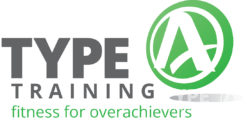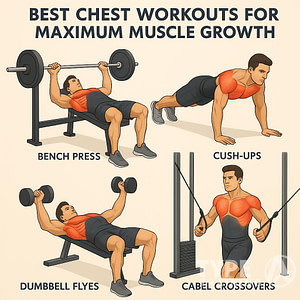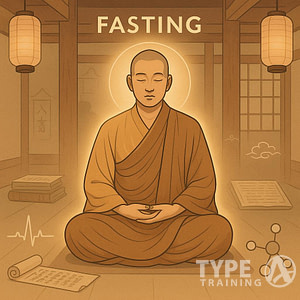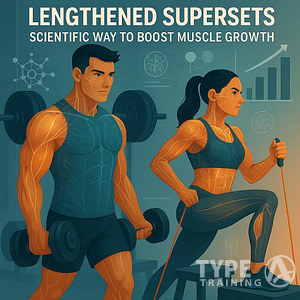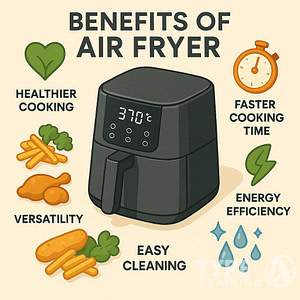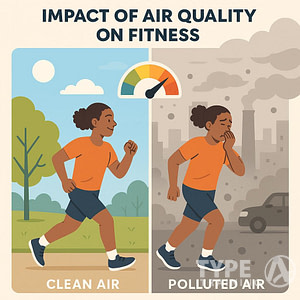When you’re choosing running
Understanding these terms is crucial for finding a shoe that fits well and supports your running style.
Whether shopping online or in-store, knowing the key features—like heel drop, pronation types, and cushioning levels—can greatly enhance your selection process.
Popular posts:
When you become familiar with how elements like shoe weight and responsiveness affect your run, it makes the shopping experience smoother.
You can focus on details like the fit of the upper, the structure of the heel counter, and the roominess of the toe box to ensure comfort and performance.
This knowledge is your tool in making the best choice for your feet.
Key Takeaways
- Understand key running shoe terms to make informed choices.
- Familiarity with shoe structure enhances shopping experience.
- Knowledge empowers better fit and performance decisions.
Foot Motion During Running
Foot motion during running, also known as pronation, involves how your foot rolls while you walk or run.
It plays a key role in distributing body weight and absorbing impact.
There are three categories that describe this motion:
- Balanced Motion: Your foot rolls slightly inward and evenly. This is considered the most efficient way for feet to move during running or walking. It’s associated with less strain on muscles and joints.
- Too Much Inward Roll: When your foot rolls excessively inward, it’s known as overpronation.
This can strain the arch and make the ankle less stable. Overpronation might lead to foot problems like plantar fasciitis, shin pain, and knee issues.
Running
shoes with extra support in the midsole can help foster a more balanced stride. - Outward Roll (Also Called Supination): In this case, your foot rolls outward. This leads to weaker shock absorption, putting more pressure on the foot’s outer edge.
People who supinate could have more issues with the iliotibial band and ankle sprains.
Shoes with more cushioning can help in this situation.
This type of foot motion is often evaluated in running stores where professionals watch how you move.
Despite the focus on these issues, remember that this movement is a natural part of how each person walks or runs. There’s no single correct way; it’s more about finding
If you often get injured, understanding your tone is beneficial.
John Honerkamp, a certified running coach, advises not to change your form unless you’re experiencing long-term issues.
For those with recurring injuries, learning about specific motion issues could prevent future problems.
How to Recognize Your Foot Motion Type
To figure out how your feet roll, observe how you walk barefoot.
Split the following paragraph into two sentences.
- If your toes point inward, more weight is on the arches and inner forefoot. This indicates too much inward rolling.
- If your toes point outward, your body weight is concentrated on the foot’s outer side. This suggests an outward roll.
- Toes that run parallel to each other usually indicate a balanced distribution.
Examining your
Split the following paragraph into two sentences.
If wear patterns are more pronounced on the inside, it might suggest overpronation. Wear on the outside could indicate underpronation, while even wear often suggests balanced motion.
Knowing how your foot rolls can guide you in selecting the right footwear to reduce pain and enhance your stride.
Shoe Support Options
Support in running
There are two main categories of supportive
- Neutral Footwear: Offers cushioning and basic support.
- Stable Footwear: Aims to correct overpronation, adding more stability and support.
Identifying the Best Support for Your Feet
To decide which type of support suits you, try standing on your non-dominant foot.
Split the following paragraph into two sentences.
- If you find yourself wobbling, stability
shoes might be ideal to help keep your feet steady and reduce the chance of injury. - If you can balance without difficulty, neutral
shoes might be sufficient since you don’t need as much added support.
Remember, more support isn’t always necessary.
Choose
Softness in Shoes
Cushioning is the comfort layer hidden in a shoe’s midsection, found between the sole and your foot.
There are three main cushioning styles: barely-there, moderate, and excessive.
- Barely-There: These
shoes mimic the feel of going barefoot. They have a thin midsection and often lack a significant drop from heel to toe. - Moderate:
Shoes in this category strike a balance. They offer more padding than the barely-there types but remain sleek and agile. Most general-purpose runningshoes fit here. They’re built for comfort and protection, without compromising on speed. - Excessive: As the name suggests, these
shoes are all about extra comfort.Their thick middle layer provides top-notch shock absorption, ideal for longer runs.
Are you still deciding on the perfect shoe for your feet?
Split the following paragraph into two sentences.
- If your arch is high, neutral footwear or even barefoot-like
shoes may work well for you. These can help strengthen your feet, demanding more effort and providing less aid from the shoe. - When you’re after a softer ride, opt for
shoes with medium to maximum padding. If the foot or heel pain starts when running, cushionedshoes can provide relief. - Opt for cushioned
shoes too, when running on concrete, sidewalks, or pavement instead of softer trails.
How to Find the Right Padding Level for You
Choosing the right cushioning depends on many factors: how your foot moves when you step, how many miles you run each week, and your foot’s overall health.
Think about what type of ride you want: soft and cushy, reactive and springy, or fast and light?
- Barely-There: If you want
shoes that feel like an extension of bare feet, they’re lightweight with minimal padding or support. - Moderate: The choice for mid-range runners seeking a balance between comfort and agility. The
shoes keep you light and ready for speed while supporting longer distances. - Excessive: Ideal for those seeking a cloud-like run. The plush, cushioned build is suited for training over long distances, keeping your feet safe over many miles.
Slope from Heel to Toe in Running Shoes
Heel-to-toe drop, also simply called “drop” or “offset,” indicates the height difference between the heel and the forefoot in a running shoe.
It can be visualized as the slope ranging from heel to toe. Essentially, this measures how much cushioning is under the heel compared to the toes. The drop plays a significant role in affecting your running form and gait mechanics.
- Shoes with a higher drop (over 7mm) possess a thicker heel, forming a steeper incline. This setup encourages landing on the heel first.
- Shoes with a lower drop (0 to 6mm) present a more leveled platform, which promotes landing on the midfoot or forefoot.
How to Find the Right Heel and Toe Height Difference for You?
There are several aspects to consider when choosing the appropriate heel-to-toe drop.
Running
You should take into account your running experience, usual terrain, and history of injuries.
- Experience Level: If you’re just starting out, you might prefer a standard drop, commonly between 8 and 10mm.
Seasoned runners might experiment with minimal
shoes near 0mm or cushioned options above 10mm for long-distance runs. - Running Terrain: When running on roads, a higher drop provides more cushioning.
If you enjoy a barefoot-like experience or often run on softer trails, a lower drop might suit you better.
- Injury History: People prone to injuries may benefit from
shoes with greater cushioning and a typical heel drop. This helps offer additional support and comfort during runs.
Each factor is crucial in determining the ideal shoe for your needs during both casual jogs and endurance workouts.
Shoe Energy Return
When we talk about how
This is all about how the shoe helps push you forward with each step.
Shoes that are more responsive make it feel like you get a bounce back at every stride. This can help reduce how much effort you need to keep moving.
The secret to this springy feeling lies in the shoe’s design, from the material used in the midsole to how firm the sole is.
With features like carbon plates,
However, while these features boost responsiveness, they might offer less cushioning.
This means you might feel more of the impact force during training.
If you’re doing speedwork or have a specific footstrike, finding
Shoe Mass
The physical mass of a shoe plays a crucial role in your running experience.
Heavier
On the flip side, lighter
While features like cushioning and stability may add some extra mass, they help protect against injuries and enhance comfort.
Top Part of the Shoe
The top part of the shoe, known as the “upper,” is crucial for keeping your foot secure. It impacts how well the shoe fits and feels during use.
You’ll want to look for breathability, durability, flexibility, and how well it fits your foot.
- Breathability: Airflow is essential to keep your feet cool and dry. Look for materials that allow air to circulate to help prevent blisters.
- Durability: The material needs to be strong to handle various surfaces and weather conditions. A durable upper ensures the shoe lasts through many miles.
- Flexibility: It’s important for the upper to move comfortably with your foot. This flexibility can help avoid chafing and blisters.
- Fit: The top part significantly influences the shoe’s fit. Stretchy materials can adapt to different foot shapes, providing a personalized fit, while sturdier materials may offer more support.
Other components include laces, which help adjust the snugness, and overlays, which add structural strength. Eyelets are the holes for the laces, and eyestays keep them in place.
All these elements work together to give you a comfortable and effective shoe experience.
Heel Support in Running Shoes
The heel counter is the part of a running shoe that wraps around the back of your foot. It helps to stabilize your heel and ankle. This feature improves how the shoe fits and can reduce too much inward or outward rolling of the foot.
If you experience foot issues like plantar fasciitis or have shin splints, consider selecting
Sole
The sole of a running shoe plays a pivotal role in traction, support, and cushioning. This part of the shoe touches the ground and comes in various materials.
If you’re running on diverse surfaces, a rubber sole provides good grip and durability. In contrast, a carbon fiber sole is lightweight and strong but offers minimal cushioning, making it best for competitive sprints.
Foam is another common material.
Ethylene-Vinyl Acetate (EVA) is a light, flexible foam often found in the midsole, providing comfort and ease of movement.
Polyurethane (PU) foam, denser than EVA, offers more support and is suitable for those needing stability.
Thermoplastic polyurethane (TPU), seen in more responsive
These choices help you find the right balance for your running needs.
Toe Area
The toe area is the part of your shoe where your toes fit. Its main job is to let your toes move as you run, which helps with comfort and performance.
The right size is key: if the toe area is too tight, you might end up with calluses, bunions, or blisters. On the other hand, a space that’s too roomy can make your foot slide around, which isn’t good for stability.
Ensuring a proper fit can enhance how your foot works while inside the shoe and may reduce the risk of injuries. Finding a balance is crucial for a comfortable running experience.
Tongue
The tongue of a shoe is the part found beneath the laces, lying on top of your foot. Its primary function is to shield your foot from the laces, ensuring a snug and comfortable fit.
For those who prioritize comfort, opting for a thicker tongue might be beneficial as it provides added cushioning.
On the other hand, if you prefer a more streamlined and less bulky feel, a thinner tongue that sits closely against your foot could be the better choice, offering a sleek, aerodynamic experience.
Toe Spring
In running
The curved shape mirrors the natural contour of your foot, making your step more efficient.
While some runners may find the extra bounce unnecessary, the toe spring can ease stress on your metatarsal bones and toes.
This feature can be particularly beneficial if you often experience foot or toe pain while running, as it offers added comfort and support by reducing the pressure on these areas.
Medial Post
A medial post is a vital part of some running
By doing so, it enhances stability and helps prevent issues like plantar fasciitis, shin splints, and knee pain.
Inner Footbed
In every shoe, the inner footbed, also known as the sockliner or insole, offers added comfort and support. This layer can be removed to accommodate personal orthotic inserts.
It cushions your foot inside the shoe, enhancing support and making your walking or running more comfortable.
Heel Cushioning Pad
Heel cushioning pads improve comfort for those with a heel-to-toe stride. They enhance the way your foot lands, especially at the heel strike point.
Designed for runners on hard surfaces like asphalt or concrete, these pads are typically found in
Picture them as a springy layer beneath your heel, giving you extra bounce and support during your run. This feature is ideal for efficiently absorbing impact forces.
FAQ About Running Shoe Terminology
What is a Heel-to-Toe Drop?
The heel-to-toe drop is the height difference between the heel and the forefront of the shoe. Most traditional running
A higher heel drop provides more cushioning for heel strikers, while a lower drop is favored by those who prefer a more natural running style.
Why is Pronation Important?
Pronation refers to the way your foot rolls inward when it hits the ground. There are three types of pronation: neutral, overpronation, and underpronation (also known as supination).
Finding
What Do Terms Like Motion Control and Stability Mean?
- Motion Control
Shoes : Designed for runners with severe overpronation, these provide extra support and prevent excessive inward foot rolling. - Stability
Shoes : Offer moderate support and are suitable for runners with mild to moderate overpronation.
How Does Cushioning Affect My Running?
Cushioning in running
Less cushioned
What Are Minimalist
Minimalist
Why Consider the Shoe’s Upper Material?
The upper is the fabric part that covers your foot. Breathable and lightweight materials help with ventilation, keeping your feet cool during runs.
Find materials that suit the climate and your comfort preference.
What’s the Role of Shoe Weight in Running?
Lighter
